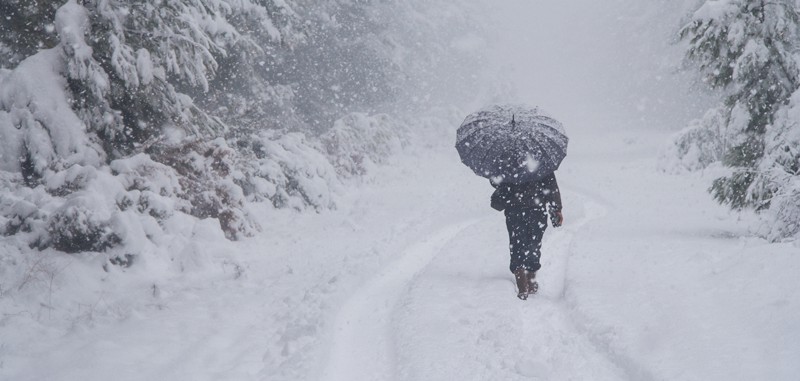
Every year, like clockwork, climate deniers such as President Donald Trump and the 150 members of Congress who still deny the science of climate change point to the continued existence of snow as though it disproves the trends that scientists have warned us about.
We know that climate change predicts a warmer planet. In fact, the five warmest years on record were, in this order, 2016, 2015, 2017, 2018, and 2014 — all notably within the last decade. But climate change means much more than that — rising temperatures also mean a wetter climate in many regions, for starters.
As we’ve seen, just because average temperatures across the globe are warming doesn’t mean that temperatures in some places will stop falling before freezing. Add in a wetter atmosphere in these colder places, and you’ve got supercharged winter storms like the ones we’ve seen in late 2019 across the across the Northeast. For example, there was recently a northeastern an early-December storm that was connected with 16 deaths; on the high plains, 9 people died in a plane crash caused by heavy snow; and in Iowa, an intense snowstorm created dangerous driving conditions that led to a 50-car pileup.
What does the science say about climate change and winter weather? Here are three ways that climate change could potentially affect the frequency and magnitude of winter storms.
- Winter storms are warmer and wetter, which means more snowfall
Warm temperatures drive evaporation, the mechanism by which water is transported into the atmosphere — and warmer air can hold more moisture. This means that climate change is helping create a wetter atmosphere relative to the conditions in which human civilization developed, with some climate models predicting storms with a 20% higher rate of precipitation. In warmer seasons, this means storms like Hurricane Harvey or Florence can be more damaging, because the wetter atmosphere means they dump large amounts of rain over a small area.
But in the winter — a wetter atmosphere means warmer, wetter storms — and increased snowfall.. Temperatures that are warmer relative to the historical normal but which still fall below freezing can mean more powerful snowstorms — especially in the fall and spring. For example, as climate change has warmed Alaska over the last 150 years, snowfall there has doubled. In other parts of the country, even in the winter, and especially as sea levels rise, coastal storms with powerful winds can drive storm surges that create dangerous flooding.
2. The path of storms is changing, which increases the number of storms we see
As winter storms hold more water, the path they cut across North America also appears to be changing — meaning powerful storms carrying frigid Arctic air collide with the comparably warmer air above the Atlantic ocean to cause devastation.
It starts with where they develop. The Arctic is warming at twice the average rate of the planet in a feedback loop that leads to less of the Earth’s surface being covered with ice and more of the Earth’s surface being covered with water. Warmer surface temperatures in the Arctic region lead to more evaporation, allowing more storms to develop. The path of these storms is determined by the jet stream — air currents in the atmosphere — and the relative air pressure around them. That’s changing, too.
Scientists are also researching a phenomenon they call the “North American winter temperature dipole.” Compared with conditions before 1980, the United States and Canada often see warmer, more high pressure air than normal west of the Rocky mountains, and colder, more low pressure air than normal to the east. The difference in pressure pulls the storms that form into the Arctic to the east. Cold arctic air bumps up against warmer than usual air from the Atlantic ocean, leading to the formation of storms called “bomb cyclones,” like one storm with comparable pressure to a Category 2 hurricane that left thousands without power, cancelled hundreds of flights, and caused massive disruptions in the Northeastern United States in October 2019.
3. Winter storms are lasting longer and becoming more dangerous
As a result of climate change, the jet stream is also changing — and that has an impact on the length of winter storms. Research shows that weather patterns caused by this changing jet stream linger for longer, meaning that people impacted by the storms — often left without electricity and vital access to lifesaving services — may see dangerously low temperatures continue for a longer period of time.
The combination of all of these impacts means that winter storms are becoming more and more dangerous as our climate changes — just another reason for acting on climate change by moving us to a 100% clean energy future as soon as we can.